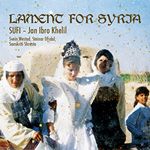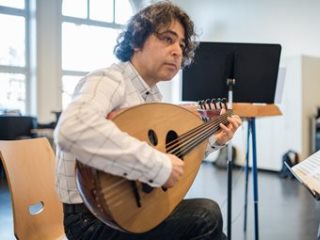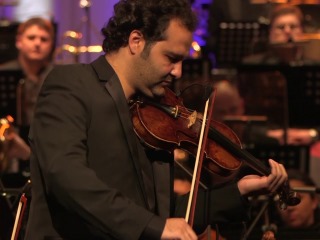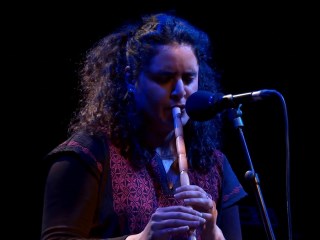FolkWorld #72 07/2020
Syria: Every Child is a Prophet
Many a Syrian musician has fled from his war-torn country in an attempt to find a safe life in Europe
... if not stranded on a Greek island in the Aegean Sea ...
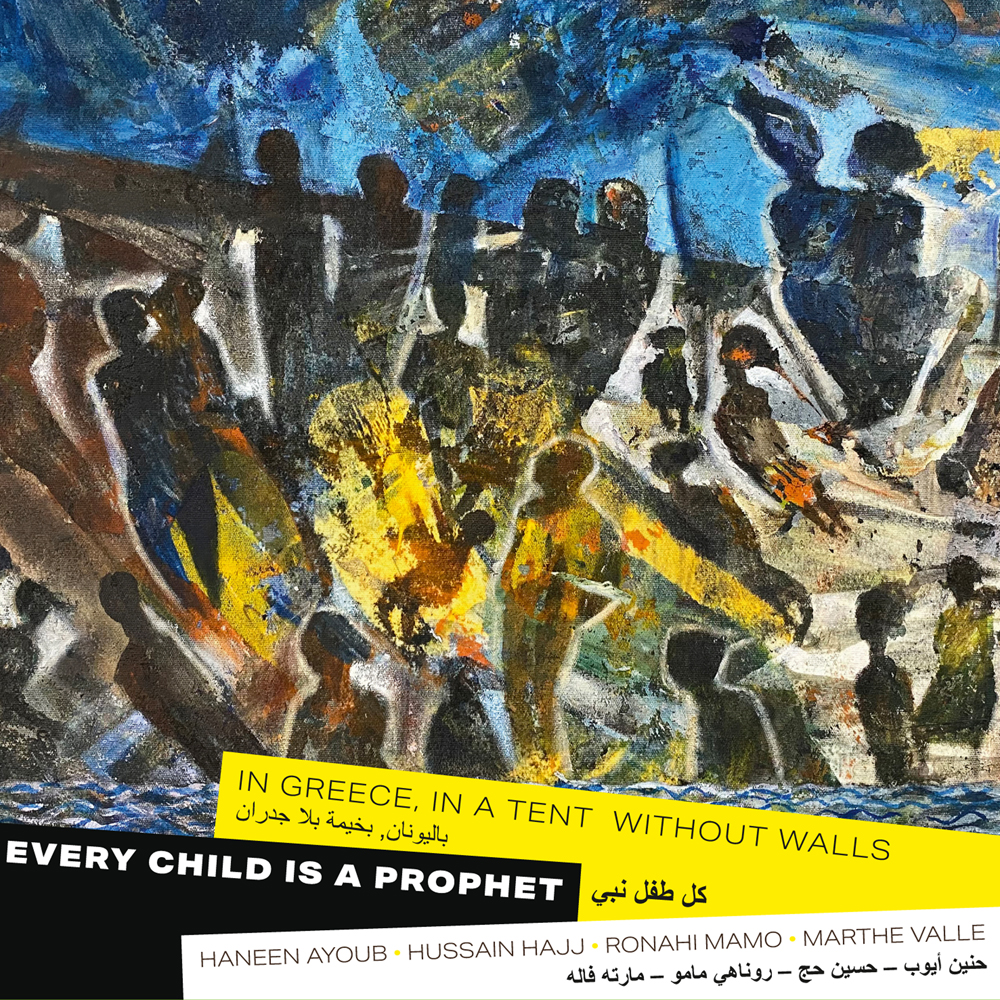
– Marthe Valle
Marthe Valle is a singer and songwriter from Bergen. In 2005, her debut solo albumhad been awarded the Spellemannprisen as best newcomer;
in 2010, she made the finals of the Norwegian X Factor. Recently, she visited the refugee camps on the Greek island of Lesbos. Over there,
thousands of men, women and children from Syria, as well as Afghanistan, Iraq and other countries, are forced to stay. They cannot carry on,
nor can they move back. Every Child is a Prophet is addressing Civil War, refugees and geopolitics.
Syrian poet Adnan Alaoda has penned lyrics in Arabic, which Marthe interprets in English. Together with Manar Alhashemi and Hussain Hajj
she wrote the music and arrangements, where Western instrumentation such as Marthe's piano and synthesizer or Norwegian bluesman Knut Reiersrud's
electric guitar collide in a rewarding culture clash with oud, bouzouki, baglama and saz.
Marthe Valle "Every Child is a Prophet", Kirkelig Kulturverksted, 2020
The music of Syria may refer to musical traditions and practices in modern-day Syria (as opposed to Greater Syria), merging the habits of people who settled in Syria throughout its history. Syria was long one of the Arab world's centers for musical innovation in the field of classical Arab music; for example, the city of Aleppo is known for its muwashshah music, which was specially conceived to accompany Andalusian muwashshah poetry.
Folk music
Folk music of Syria is for the most part based on the oud, which is a stringed instrument considered to be the ancestor of the European lute, as well as the flute nay and hand-held percussion instruments, such as the darbouka, daf or riq. Other typical instruments are the qanun and kamanjah. In semi-Nomadic regions, Bedouin music which is based on the Mizmar, zurna and rababah is popular.
As in other countries, modern Syrian music notably contrasts its folk music. It uses an orchestra of mostly European instruments with one lead vocalist and sometimes a backup chorus. This type of music is very popular in the Middle East. Famous singers are Assala nasri , Farid al-Atrash, Fahd Ballan, Sabah Fakhri, Mayada El Hennawy and George Wassouf.
Classical Arab music
A typical Syrian classical genre is the Muwashshah that goes back to Medieval times. Performed by a lead singer or a choir, it consists of a classical form of Arabic poetry set to music. It usually consists of a multi-lined strophic verse poem written in classical Arabic, mostly consisting of five stanzas, which alternates with a refrain with a running rhyme. The muwashshah is usually opened with one or two lines matching the second part of the poem in rhyme and meter.
The city of Aleppo in Northern Syria is considered to be the centre of muwashshah.
Syriac music
Syria, being one of the countries where Christianity had originated, has a long history of church music. It is the origin of the Christian hymnody, which was entirely developed in Syria. And its style of chant, the Syrian chant which continues to be the liturgical music of some of the various Syrian Christians, is the oldest in the world.
There was formerly a distinctive tradition of Syrian Jewish religious music, which still flourishes in Syrian-Jewish communities around the world, such as New York City, Mexico City and Buenos Aires: see The Weekly Maqam, Baqashot and Pizmonim.
Dances
One of the most popular dances in Syria is the Dabkeh, a folk dance combining circle dancing and line dancing formed from right to left and headed by a leader which alternates between facing the audience and other dancers. It is mostly performed at weddings and other joyous occasions. Other popular folklore dances include the "Arāḍa" (Arabic: عراضة), a dance performed with swords, as well as oriental dance for women.
From Wikipedia, the free encyclopedia
[en.wikipedia.org/wiki/Music_of_Syria].
Wikipedia® is a registered trademark of the Wikimedia Foundation, Inc., a non-profit organization.
Text is available under the Creative Commons Attribution-ShareAlike License.
Date: May 2020.
Photo Credits:
(1),(3) Marthe Valle ('Every Child is a Prophet'),
(2) Hassan Taha,
(4) Jan Ibro Khelil ('Lament for Syria'),
(5) Maias Alyamani,
(6) Naïssam Jalal
(unknown/website).
FolkWorld - Home of European Music
 Layout & Idea of FolkWorld © The Mollis - Editors of FolkWorld
Layout & Idea of FolkWorld © The Mollis - Editors of FolkWorld

